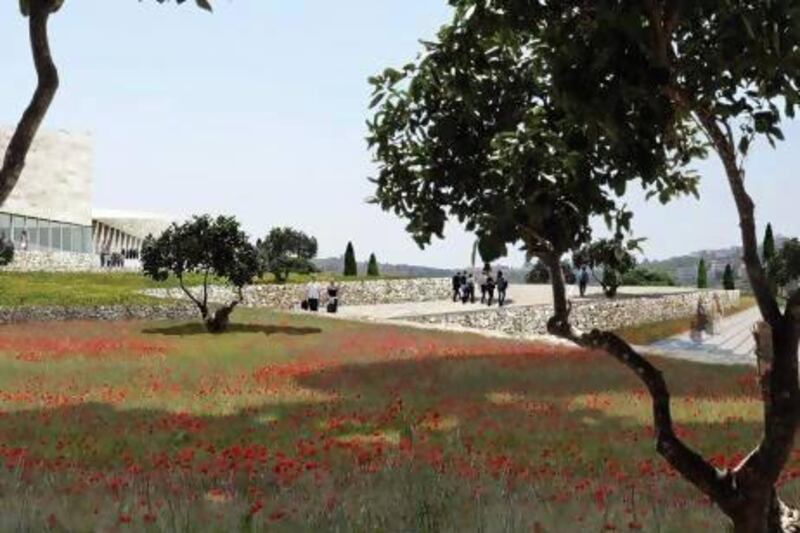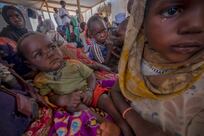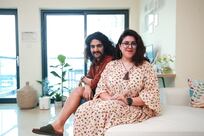Imagine a lush field of poppies swaying in a soft breeze amid dozens of orange trees. Now imagine a building housing an entire people’s ideas, experiences and historically significant objects. In less than two years, this project, first proposed about 15 years ago, will be realised on the hilly terrain of Birzeit, a town just outside the West Bank city of Ramallah. The building will be home to the Palestinian Museum, which aims to connect about 10 million Palestinians scattered around the world.
“We want this to be a place that opens up discourse to various, sometimes conflicting, narratives of Palestine, on issues such as identity and representation,” says Jack Persekian, the museum’s director and curator, who previously directed the Sharjah Art Foundation and the Sharjah Biennial.
In addition to showcasing elements of Palestinian cultural heritage, art and history on a scale unmatched in the West Bank, the museum will transcend borders, as Persekian describes it. The concept is simple: a central museum will be based in the Palestinian Territories with different affiliated satellites peppered across the globe: from Chile to California in the Americas, and from Paris to London in Europe. An interactive virtual museum will also be created to cater to Palestinians on a global scale.
It will take about US$15 million (Dh55m) to complete the first phase of the 3,000-square-metre museum. The design, by the Dublin-based Heneghan Peng Architects – the firm behind the Grand Museum of Egypt in Cairo – is inspired by the cascading hills on which Birzeit lies.
Palestinians have built many museums in the past few years, which Persekian says is a trend indicating a thirst for spaces showcasing local art, culture and history – old and new.
“We have about 30 museums,” says Persekian. “Some are rather small, focusing on ethnographic and archaeological elements. We saw that there’s also a niche for more modern, contemporary modes of expression.”
One of the temporary exhibitions focusing on “the old” will show cherished items that Palestinians passed down from generation to generation before, during and after the 1948 war. Those include keys and deeds to homes and books that survived the Nakba (the catastrophe that befell the Palestinians).
As part of the “new”, visitors will be able to experience more contemporary modes of art that may include smells in addition to sights, Persekian explains, driving home the point that the museum will offer a range of different artistic disciplines and modes of representation.
Attending the cornerstone-laying ceremony earlier this month, Khaled Hourani, the arts director of the International Academy of Art Palestine, says conditions are ripe to set up a museum of this calibre. “It’s time to do this,” he adds, “because there’s less hope now than there was before. We see this museum as a way to look forward to the future.”
It's easy to understand why this project, spearheaded by the Palestinian non-profit Welfare Association, is generating enthusiasm. This new venture comes at a time when the ability to move is severely hindered by Israeli checkpoints and roadblocks, and a political stalemate has only been exacerbated by an economic crisis that has put a damper on life in the West Bank.
Fatin Farhat, the director of the cultural department at the Ramallah Municipality, says it’s high time a project of this kind was undertaken in the West Bank. “This museum is not about having pottery in a room,” Farhat elaborates. “It’s about documenting Palestinian intangible cultural heritage subjected to countless negations by the occupation.”
Even though the museum is being built to cater to geographically scattered Palestinians, problems of accessibility affect even those living in proximity. “It’s not easy for people in the nearby villages or those in Gaza to come here,” Farhat says. “Also, people are not used to museums, simply because there are other priorities, namely survival.”
Farhat acknowledges that there have been major shortcomings in the art realm before the establishment of the Palestinian Authority (PA) because of limited resources, and even throughout the PA’s rule because it had not prioritised art and culture until recently. “Palestinians have been slow in this area, we are aware of that,” she says. “But there is a new awareness about the importance of preserving, showcasing and making intangible heritage accessible for Palestinians all over the world.”
Follow us
[ @LifeNationalUAE ]
And follow us on Facebook for discussions, entertainment, reviews, wellness and news.





